Players - Alex Raisbeck

- Birthdate: 26 December 1878
- Birthplace: Wallacestone, Stirlingshire, Scotland
- Date of death: 12 March 1949
- Other clubs: Larkhall Thistle (1894-96), Hibernian (1896-98), Stoke City (loan 1898), Partick Thistle (1909-14)
- Signed from: Hibernian
- Signed for LFC: £350, 30.04.1898
- International debut: 07.04.1900 vs. England
- International caps: 8/0 - 06.04.1907
- Liverpool debut: 03.09.1898
- Last appearance: 30.04.1909
- Debut goal: 11.02.1899
- Last goal: 12.04.1909
- Contract expiry: 11.06.1909
- Win ratio: 47.21% W:161 D:63 L:117
- Honours: League Championship 1900/01, 1905/06; Second Division 1904/05
- League games / goals: 312 / 18
- Total games / goals: 341 / 19
Player Profile
The Athletic News reported on Liverpool‘s capture of Raisbeck and his compatriot, George Allan: "Two more important catches for the Anfield club have been effected, and few will say that Allan of the Celts and Raisbeck, of Stoke-com-Edinburgh Hibs, are not good goods. Raisbeck had a name in Scotland as the best centre half in the country, and for Stoke, where he has shown what he can do. And it has happened as I told our readers a week or two ago, Mr. Editor, in commenting on Liverpool’s strength and weakness. Now with these last additions, they should go on smilingly, and I think for the first time in their history they will find themselves stronger favourites than their neighbours for the big trophies of next season."

Raisbeck always led by example and was chosen captain of the team after two seasons at Liverpool. Despite being 'only' 5'10" (178 cm.) in height his timing and athleticism enabled him to reach the ball before taller opponents. He was an energetic centre-half, a position more similar to a modern day midfielder rather than a defender. He was at the forefront of Liverpool's defence, but also the instigator of Liverpool's attacks possessing an impressive stamina. The scribe in the club programme, after Liverpool's and Everton's cup replay at Goodison Park on 8 February 1905, captured his essence as a player: "Never has Raisbeck shown more wondrous football. He was here, there and everywhere. Now initiating an attack, now breaking up another, and again chasing Sharp when that lithe young man appeared to be all on his own. He dominated the whole field, and was, without question, the one superlative player. I am never inclined to over elaborate praise, but truly, Alec Raisbeck was a giant among pigmies." Raisbeck led Liverpool to their first-ever Football League Division One Championship title in 1901. Incredibly Liverpool were relegated three years later but rebounded straight back into the First Division where Raisbeck lifted the Championship title again in a season that was also "remarkable" for the fact that "Alec Raisbeck has taken off his beloved moustache, and has joined the bare-faced brigade."
Victor Hall painted a vivid picture in an article in 1924 called: "Alec Raisbeck, who raised Liverpool's prestige" in the Liverpool Echo 15 years after Alexander left Liverpool to go back to his native Scotland: "What a trier he was! Who that ever saw him play can forget the unmatchable enthusiasm he displayed in the sheer love of the game. He not only put body and dash into individual games he played, but more importantly he helped to create the soul, that inward sacred fire of zeal without which no club can thrive and live. Let us recall his characteristics. Tall, lithe, sinuous, and yet gifted with muscular and physical development beyond the ordinary. Active to a degree, speed either on the turn or in flight, and with niche, at the addition of resourcefulness and judgement that would have been all sufficient in a other player, without those added gifts, methodical in training, painstaking in preparation, genial with his players and considerate with his committee. With a perfect blending of the qualities that to make a really great player!"
"Raisbeck was wholeheartedly a destroyer of attacks when it came from the opposing wing. We have said that he was speed in turn and on the run. We might amplify this and say, that we have never seen in England, a speedier half-back, who could tackle a speedy forward, turn with him, and overtake and tackle him again. There may be and may have been others so gifted. We have not seen them. His judgement was sound, his valour outstanding and, naturally for a half-back, his control and placing of the ball was equally confident. During his playing career at Anfield, he had to meet forwards whose names and records were outstanding in the history of the game, and yet of one of them could it be said that they were the superior or master of Raisbeck's defensive play. His temperament rarely failed him, no matter how vigorous the play he had to meet."
 The 1908/09 season was Raisbeck's last at Liverpool. He missed four months of the season through injury and Liverpool narrowly escaped relegation to the Second Division. He was still struggling with knee injury and pined for a return to Scotland. When Partick Thistle's representative was in Liverpool to sign his Welsh teammate Maurice Parry, he asked Alex whether he knew of any more quality players and Alex stated his own case and signed up as well. He proudly wore their colours for five seasons. In 1914 Raisbeck managed Hamilton Academical where he was in charge for three seasons before he was hired as director at the club for three and a half years. Raisbeck returned to England and took over as manager of second division Bristol City on 28 December 1921. City were relegated that spring but bounced straight back as third division south champions in the 1922/23 season. That very season manager David Ashworth left League champions Liverpool just before Christmas and Raisbeck was tipped as his successor before Matt McQueen took over in mid-February. Raisbeck had led Bristol City to the Second Division but his team went straight back down again. After finishing third and fourth, Bristol got promoted again to the Second Division in the 1926/27 season with former Liverpool centre-half, Walter Wadsworth, as captain and managed a decent twelfth place. Raisbeck resigned on 29 June 1929 after Bristol City finished twentieth out of 22 teams narrowly escaping relegation. Raisbeck later managed Halifax Town (1930-1936), Chester (1936-1938) and Bath City (1938) before returning to Liverpool in 1939, not as manager as he once hoped to, but as a scout. He served Liverpool until his dying day on 12 March 1949. He was then a resident at Bingley Road, only a ten-minute walk from the ground on Anfield Road. He died in Walton hospital after he had been ill for a few weeks, said to be suffering from an attack of jaundice. Raisbeck's death came as a surprise as he had been expected to recover.
The 1908/09 season was Raisbeck's last at Liverpool. He missed four months of the season through injury and Liverpool narrowly escaped relegation to the Second Division. He was still struggling with knee injury and pined for a return to Scotland. When Partick Thistle's representative was in Liverpool to sign his Welsh teammate Maurice Parry, he asked Alex whether he knew of any more quality players and Alex stated his own case and signed up as well. He proudly wore their colours for five seasons. In 1914 Raisbeck managed Hamilton Academical where he was in charge for three seasons before he was hired as director at the club for three and a half years. Raisbeck returned to England and took over as manager of second division Bristol City on 28 December 1921. City were relegated that spring but bounced straight back as third division south champions in the 1922/23 season. That very season manager David Ashworth left League champions Liverpool just before Christmas and Raisbeck was tipped as his successor before Matt McQueen took over in mid-February. Raisbeck had led Bristol City to the Second Division but his team went straight back down again. After finishing third and fourth, Bristol got promoted again to the Second Division in the 1926/27 season with former Liverpool centre-half, Walter Wadsworth, as captain and managed a decent twelfth place. Raisbeck resigned on 29 June 1929 after Bristol City finished twentieth out of 22 teams narrowly escaping relegation. Raisbeck later managed Halifax Town (1930-1936), Chester (1936-1938) and Bath City (1938) before returning to Liverpool in 1939, not as manager as he once hoped to, but as a scout. He served Liverpool until his dying day on 12 March 1949. He was then a resident at Bingley Road, only a ten-minute walk from the ground on Anfield Road. He died in Walton hospital after he had been ill for a few weeks, said to be suffering from an attack of jaundice. Raisbeck's death came as a surprise as he had been expected to recover.Raisbeck said that he enjoyed playing against Everton the most; his duels with Blues' Sandy Young were legendary. When a survey was conducted among Liverpool supporters in 1939 to name the most famous players Liverpool had ever had in their ranks Raisbeck, who had left the club three decades earlier, came second behind the incredibly popular Elisha Scott, the Scot clearly having made a lasting impression thirty years after he left Liverpool. Raisbeck is a member of Liverpool's Official Hall of Fame and certainly deserves to be mentioned in the same breath as Dalglish, Liddell and Gerrard.
Appearances per season
| Season | League | FA | LC | Europe | Other | Total |
|---|---|---|---|---|---|---|
| Totals | 312 | 28 | 0 | 0 | 1 | 341 |
| 1898-1899 | 32 | 6 | 0 | 0 | 0 | 38 |
| 1899-1900 | 32 | 4 | 0 | 0 | 0 | 36 |
| 1900-1901 | 31 | 2 | 0 | 0 | 0 | 33 |
| 1901-1902 | 26 | 3 | 0 | 0 | 0 | 29 |
| 1902-1903 | 27 | 1 | 0 | 0 | 0 | 28 |
| 1903-1904 | 30 | 1 | 0 | 0 | 0 | 31 |
| 1904-1905 | 33 | 2 | 0 | 0 | 0 | 35 |
| 1905-1906 | 36 | 4 | 0 | 0 | 1 | 41 |
| 1906-1907 | 27 | 1 | 0 | 0 | 0 | 28 |
| 1907-1908 | 23 | 3 | 0 | 0 | 0 | 26 |
| 1908-1909 | 15 | 1 | 0 | 0 | 0 | 16 |
A more detailed look at the player's appearances
| Apps | Minutes | Opponent |
|---|---|---|
| 24 | 2160 | Everton |
| 19 | 1710 | Blackburn Rovers |
| 17 | 1530 | Sheffield United |
| 17 | 1530 | Newcastle United |
| 16 | 1440 | Bury |
| 16 | 1440 | Stoke City |
| 16 | 1440 | Sunderland |
| 16 | 1440 | Notts County |
| 15 | 1350 | WBA |
| 15 | 1350 | Aston Villa |
| 14 | 1260 | Sheffield Wednesday |
| 13 | 1170 | Nottingham Forest |
| 13 | 1170 | Bolton Wanderers |
| 13 | 1170 | Derby |
| 13 | 1170 | Manchester City |
| 12 | 1080 | Wolves |
| 10 | 900 | Birmingham City |
| 10 | 900 | Preston North End |
| 10 | 900 | Middlesbrough |
| 8 | 720 | Manchester United |
| 5 | 450 | Burnley |
| 5 | 450 | Grimsby Town |
| 4 | 360 | Glossop North End |
| 4 | 360 | Leicester City |
| 4 | 360 | Bradford City |
| 4 | 360 | Bristol City |
| 3 | 270 | Barnsley |
| 3 | 270 | Arsenal |
| 2 | 180 | Chesterfield |
| 2 | 180 | Burton United |
| 2 | 180 | Port Vale |
| 2 | 180 | Doncaster Rovers |
| 2 | 180 | Southampton |
| 2 | 180 | Chelsea |
| 2 | 180 | Brighton & Hove Albion |
| 2 | 180 | Lincoln City |
| 2 | 180 | Gainsborough Trinity |
| 1 | 90 | Corinthians |
| 1 | 90 | Blackpool |
| 1 | 90 | Norwich City |
| 1 | 90 | West Ham United |
| Total | Venue |
|---|---|
| 168 | Away |
| 168 | Home |
| 5 | Neutral |
| Total | Competition |
|---|---|
| 312 | League |
| 28 | FA Cup |
| 1 | Sheriff of London Charity Shield |
| Total | W | D | L | Win % | Manager |
|---|---|---|---|---|---|
| 341 | 161 | 63 | 117 | 47.2% | Tom Watson |
Goals per season
| Season | League | FA | LC | Europe | Other | Total |
|---|---|---|---|---|---|---|
| Totals | 18 | 1 | 0 | 0 | 0 | 19 |
| 1898-1899 | 1 | 1 | 0 | 0 | 0 | 2 |
| 1899-1900 | 3 | 0 | 0 | 0 | 0 | 3 |
| 1900-1901 | 1 | 0 | 0 | 0 | 0 | 1 |
| 1901-1902 | 0 | 0 | 0 | 0 | 0 | 0 |
| 1902-1903 | 1 | 0 | 0 | 0 | 0 | 1 |
| 1903-1904 | 1 | 0 | 0 | 0 | 0 | 1 |
| 1904-1905 | 2 | 0 | 0 | 0 | 0 | 2 |
| 1905-1906 | 1 | 0 | 0 | 0 | 0 | 1 |
| 1906-1907 | 4 | 0 | 0 | 0 | 0 | 4 |
| 1907-1908 | 2 | 0 | 0 | 0 | 0 | 2 |
| 1908-1909 | 2 | 0 | 0 | 0 | 0 | 2 |
A more detailed look at the player's goalscoring
| Total | Opponent |
|---|---|
| 3 | Notts County |
| 2 | Aston Villa |
| 2 | Newcastle United |
| 2 | Preston North End |
| 1 | Everton |
| 1 | Wolves |
| 1 | Arsenal |
| 1 | Sheffield Wednesday |
| 1 | Chesterfield |
| 1 | Bristol City |
| 1 | Derby |
| 1 | Stoke City |
| 1 | Sunderland |
| 1 | Manchester United |
Milestone Appearances
| # | Date | Against | Stadium | Competition |
|---|---|---|---|---|
| 1 | 03.09.1898 | The Wednesday | Anfield | League |
| 50 | 11.11.1899 | Newcastle United | St James' Park | League |
| 100 | 09.03.1901 | Wolves | Anfield | League |
| 150 | 27.12.1902 | Bury | Gigg Lane | League |
| 200 | 24.09.1904 | Lincoln City | Sincil Bank | League |
| 250 | 30.12.1905 | Woolwich Arsenal | Anfield | League |
| 300 | 14.09.1907 | Blackburn Rovers | Anfield | League |
Milestone Goals
| # | Minute | Date | Against | Stadium | Competition |
|---|---|---|---|---|---|
| 1 | 50 | 11.02.1899 | Newcastle United | Anfield | FA Cup |
Related Articles
Is Raisbeck better suited as full back?
From the Lancashire Evening Post on 6 January, 1900.
Raisbeck's testimonial
Partick Thistle faced an International XI for Raisbeck's benefit. Published on 6 January 1914.
1896-1899: A new exciting era at Liverpool
Liverpool FC wear red for the first time. The most successful manager in the country takes over and brings his magic touch to the 'Reds' bringing them tantalizingly close to a league and cup double.
Alex Raisbeck - Liverpool's first superstar
Victor Hall painted a vivid picture of "Alexander the great" in the Liverpool Echo 15 years after he had left Liverpool.
1899-1901: Liverpool champions for the first time!
Liverpool won the league in the 1900-01 season. We give you unique insight into the local papers' reports and celebration of this glorious feat!
Liverpool at last
Daily Telegraph match report on West Bromwich Albion - Liverpool on 29.04.1901.
1901-1906: A rise from 2nd division to the title!
In 1904 Liverpool had been relegated to 2nd division only three years after winning the title for the first time. Liverpool were on their way to an amazing success!
Cox and Raisbeck back at Anfield
From the Liverpool Echo on 20 March 1911.
Related Quotes
"A man of Raisbeck's proportions, style and carriage would rivet attention anywhere. He was a picture at five feet nine inches and fully 12 and a half stone; a fine and beautifully balanced figure."
Liverpool Echo's Bee on Alex Raisbeck
Scrapbook
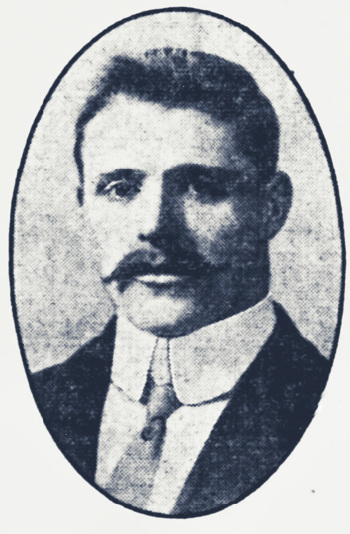
1902 - 17 February - Athletic News
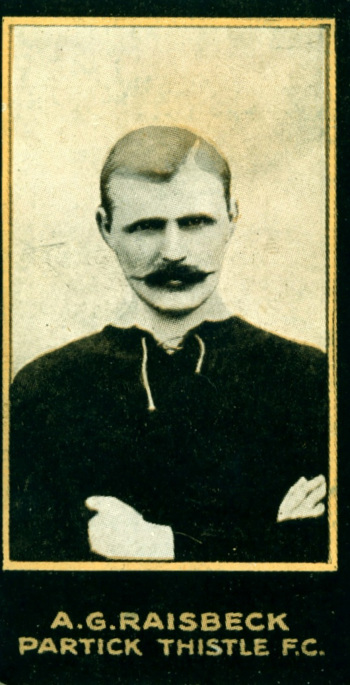
1912 - Cigarette card
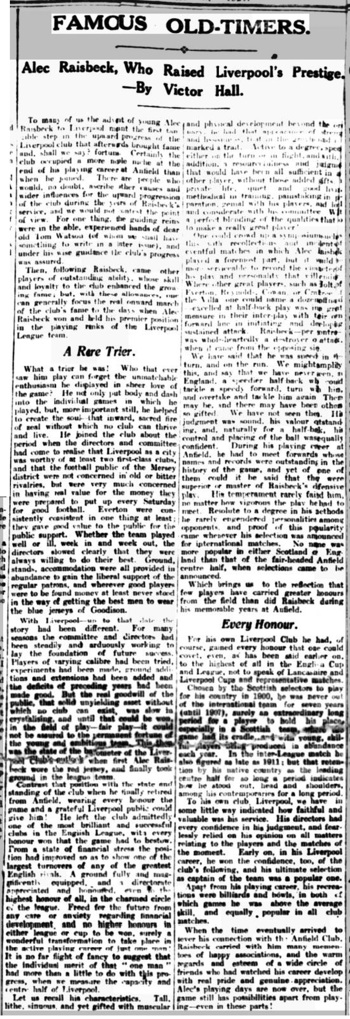
8 November 1924 - Victor Hall in the Liverpool Echo
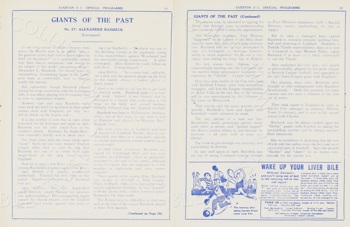
Alex Raisbeck biography in Everton match programme 1938
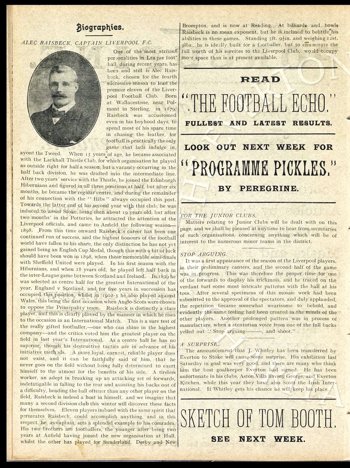
Biography from 1 September 1904 - Courtesy of the Everton Collection Charitable Trust
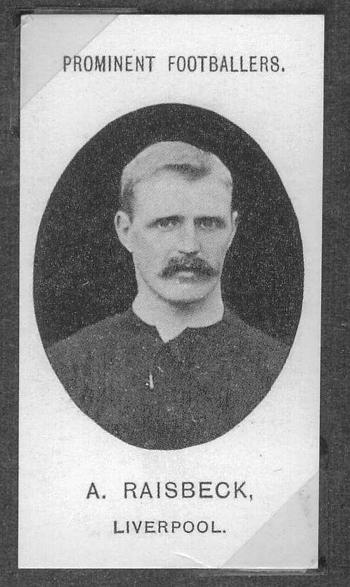
Cigarette card
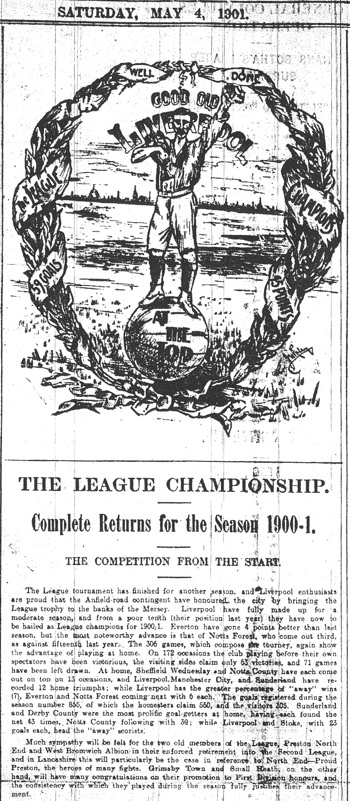
Good old Liverpool champions - 4 May 1901
Other Clubs
| Club | Season | Club rank | League apps | League goals | Total apps | Total goals |
|---|---|---|---|---|---|---|
| Larkhall Thistle | 1894-1896 | N/A | N/A | N/A | N/A | |
| Hibernian | 1896-1897 | Scotland Division 1 | 9 | 0 | 9 | 0 |
| Hibernian | 1897-1898 | Scotland Division 1 | 16 | 2 | 16 | 2 |
| Stoke City | 1897-1898 | England First Division | 4 | 0 | 8 | 0 |
| Partick Thistle | 1909-1910 | Scotland Division 1 | 22 | 2 | 25 | 2 |
| Partick Thistle | 1910-1911 | Scotland Division 1 | 29 | 2 | 31 | 2 |
| Partick Thistle | 1911-1912 | Scotland Division 1 | 27 | 3 | 29 | 3 |
| Partick Thistle | 1912-1913 | Scotland Division 1 | 23 | 0 | 24 | 0 |
| Partick Thistle | 1913-1914 | Scotland Division 1 | 12 | 0 | 12 | 0 |
| Total | 142 | 9 | 154 | 9 | ||


